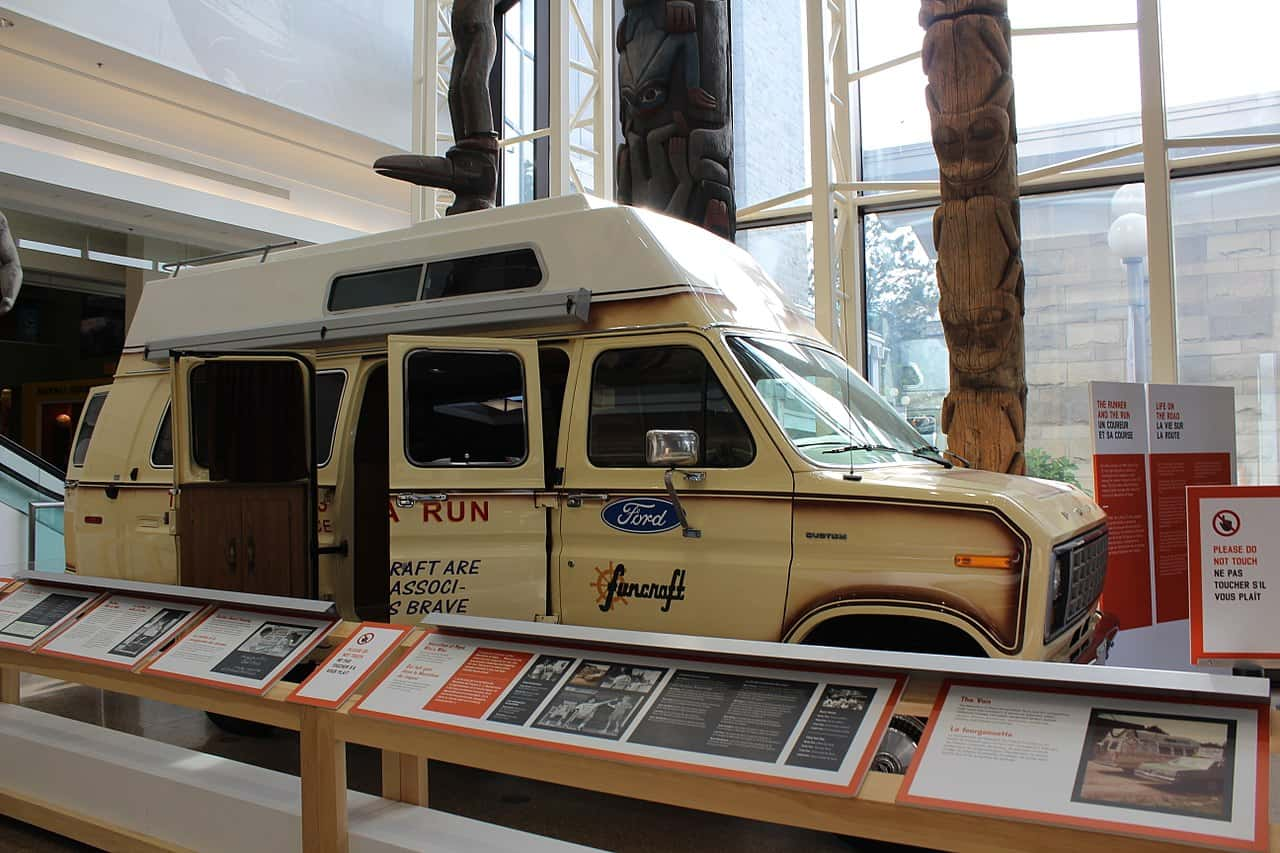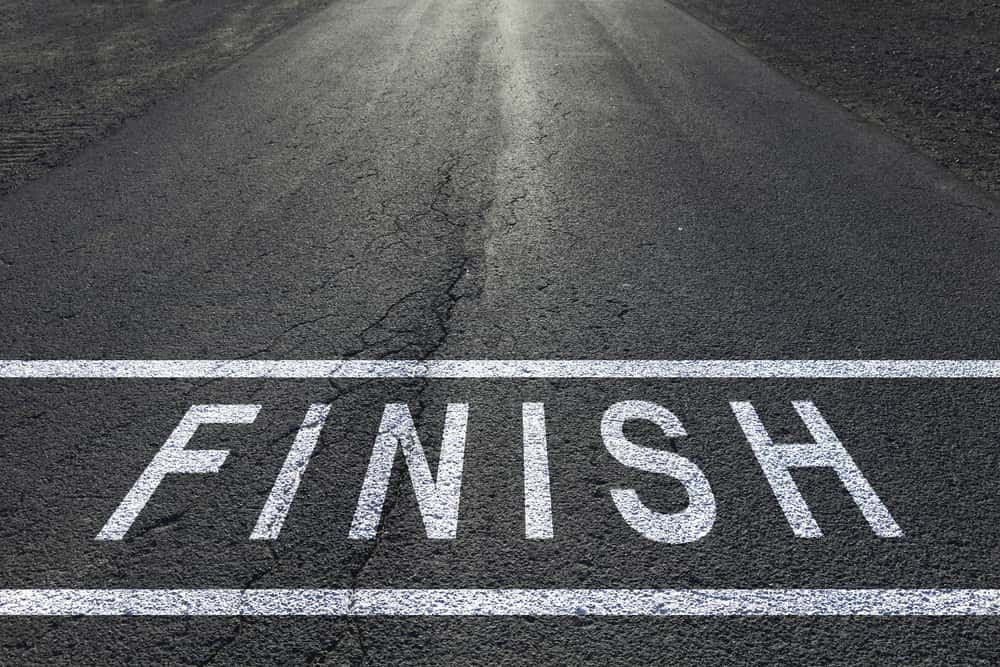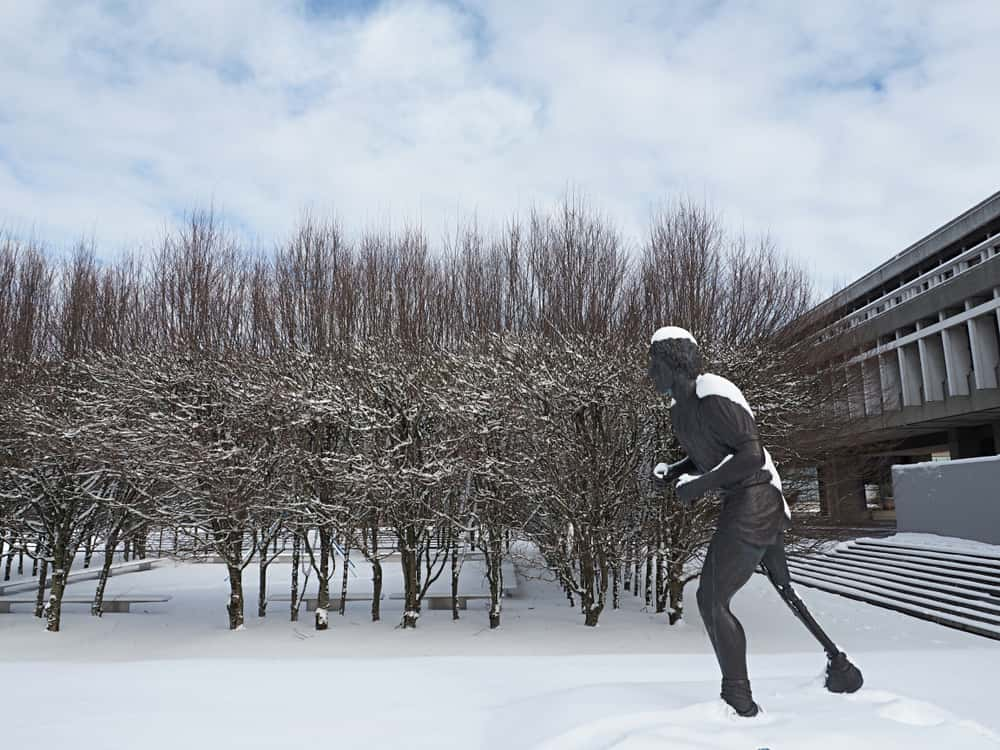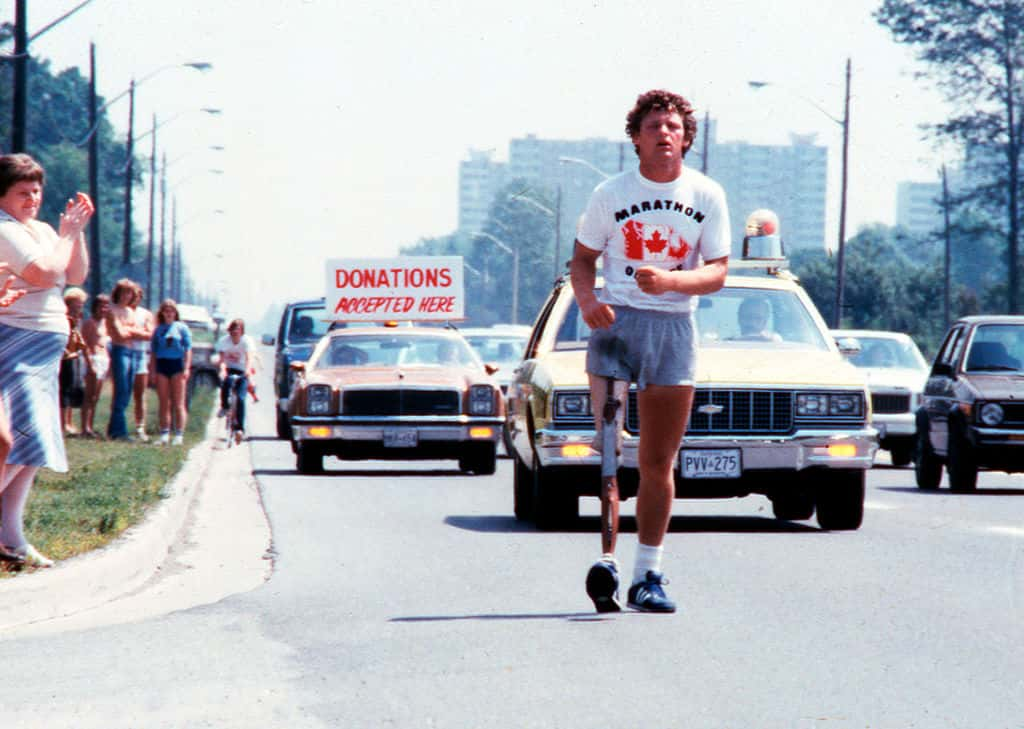There are plenty of reasons for Canadians to feel a sense of national pride. Maple syrup, bacon, beavers, and igloos might come to mind, but when the fireworks get going, look no further than the inspirational and heartbreaking story of Terry Fox to simultaneously pick you up and make you cry.
1. He Had Métis Blood
First (Nations) things first. Terry Fox had Métis heritage! His maternal grandmother, Marian Wark, née Gladue, was Métis. Unfortunately, Fox’s grandmother was tight-lipped about the family’s heritage and it’s unclear how much of his Métis culture the famous Fox knew of. Fortunately, his younger brother Darrell Fox holds official Métis status and declared in 2018, “Terry Fox is Métis".

2. He Was a Superboy
Even from a young age, Terry Fox was super competitive. He was a multi-sport athlete competing in soccer, rugby, baseball and—his favorite—basketball. Fox was short and not that good at basketball, so he spent his summer between grades eight and nine performing what we can only imagine what was a training regimen worthy of Rocky in an attempt to improve his skills.
It must have worked because by grade ten, he was a starting player on the team. Strangely enough, long-distance running was nowhere on his horizon until…
 The Terry Fox Story (1983),HBO
The Terry Fox Story (1983),HBO
3. His Coach Knew
Fox’s elementary school PE teacher, Bob McGill, must have had a knack for matching athletes to the right sport—or maybe he was just psychic. It was McGill who first put the thought of long-distance running in Fox’s mind, though the little Fox cub wasn’t altogether keen at first. He only dragged himself through the grueling training out of respect for McGill. Little did he know then what was in store for him...
4. They Worked Hard
The Fox siblings—Fred, Terry, Darrell, and Judith—were encouraged to find gainful employment early on. The Fox Four found a seasonal gig picking berries and, by their early teens, were buying their own clothes and bicycles. But it wasn’t all work. Their mother, Betty Fox, prohibited the kids from having a paper route as she believed that they needed adequate time to sleep and play.
 Getty Images
Getty Images
5. He Had a Sidekick
Terry Fox won his high school’s athlete of the year award alongside his best friend Doug Alward in their senior year. Given Fox’s competitive nature, sharing an accolade must have felt a little like coming in last. But if you’re going to share the spotlight with anyone, then your best friend isn’t a bad co-star. In the years to come, Alward would continue to be the Robin to Fox’s Batman, the Patrick to his SpongeBob, the… you get it.
6. They Knew He Had Something Special
When he was accepted to Simon Fraser University for kinesiology, Terry Fox was determined to play for the school’s varsity team. During tryouts, it was obvious that Fox wasn’t the best player, but he was the most determined, and that won him his spot on the team. A fellow player said of Fox making the team, “Terry just out-gutted them".
7. There Were Bumps Along the Road
We know Terry Fox for his determination, grit, heart and optimism. Those who knew him personally also knew him for all of these things…plus a temper. The Globe and Mail went so far as to call Fox a “tyrannical brother". They may just have witnessed an event out of context, however, as Terry, Darrell, and Doug would always go right back to being the best of friends after a big blowout.
 The Terry Fox Story (1983),HBO
The Terry Fox Story (1983),HBO
8. Things Got Physical
In the Fox household, play fighting was commonplace. Often times, Terry Fox and his older brother Fred would rough-house with their father, Rolland “Rolly” Fox. For the little Foxes, these play fights normally ended in tears, but they’d be back at it before long. In Terry’s own words, “Even to get one more shot in was worth it". That style of rough play carried through into Fox’s adulthood.
9. He Had Crash-Date With Destiny
Terry Fox crashed his car into the back of a pick-up truck while distracted by some bridge construction. Though his vehicle was left undrivable after the accident, Fox walked away largely unscathed—but it would still wind up changing his life. After the accident, he had some problems with pain in his right knee.
The pain persisted for months before Fox finally sought treatment, as he didn’t want his varsity basketball season interrupted.
10. The Odds Weren’t Great
Terry Fox finally sought medical help for the pains in his right knee and was diagnosed with osteosarcoma—bone cancer—in March of 1977. Fox was given a 50/50 chance of survival and, while his family wept at his side, the ever-determined Fox declared simply, “I’m not ready to leave this world". Is it just me, or did he sound like someone who knew that he had a hot date with a girl named destiny?
 The Terry Fox Story (1983),HBO
The Terry Fox Story (1983),HBO
11. Treatment Was Grueling
Terry Fox’s treatment for osteosarcoma was jaw-droppingly brutal. He had his right leg amputated six inches above the knee and underwent 16 months of chemotherapy to combat the disease. Nevertheless, Fox kept his spirits high and maintained a positive outlook. His “glass half full” approach yielded results and, with the aid of a prosthetic leg, he was walking three short weeks after his surgery…and playing golf not long after that.
 The Terry Fox Story (1983),HBO
The Terry Fox Story (1983),HBO
12. He Got Back Out There
While undergoing chemotherapy treatment, Fox was recruited by the Canadian Wheelchair Sports Association to play basketball. He rolled that wheelchair to three—read it, THREE—national titles with his team and was named an all-star by the North American Wheelchair Basketball Association in 1980. All this, and he learned to play the sport of wheelchair basketball in less than two months!
 The Terry Fox Story (1983),HBO
The Terry Fox Story (1983),HBO
13. He Wanted to Turn Things Around
How does running 42km in a day sound? How about running 42km a day every day…for about six months? That was Terry Fox’s plan for his 8,000km Marathon of Hope—a cross-Canada campaign to raise money for cancer research. He faced everything from heavy winds and rain to snowstorms and sweltering heat but never failed to get in his daily marathon.
14. There Was Blood, Sweat & Tears
The training for the Marathon of Hope wasn’t easy—in fact, it was absolutely excruciating. Terry Fox experienced bone bruises, blisters, sores, and intense pain on his stump leg. But if cancer couldn’t stop him, then some pain certainly wasn’t going to either. Fox said that after about 20 minutes, he would reach a pain threshold—giving new meaning to the phrase “walking it off”.
15. He Was Utterly Determined
In preparation for his Marathon of Hope, Terry Fox competed in a 27km road race. Being the only handicapped competitor, he finished dead last… as in, ten minutes behind the nearest runner. Fox’s determination to finish the race, however, had the other runners and onlookers cheering him on and applauding his valiant display as he crossed the finish line. So, who’s the real winner here?
16. He Got a Head Start
Terry Fox would wake up every morning at 4 AM during his Marathon of Hope and would be shoes to the pavement by 5 AM. In his diary entries, Fox often wrote about the cold mornings but didn’t seem to mind it so much, saying, “I’d rather run in rain, snow, anything except against the wind". Given that he was running a daily marathon, an early start just makes sense.
17. He Was a True Believer
In a letter to the Canadian Cancer Society that is more quotable than a Shakespearean sonnet, Fox shared a line so heartbreaking, it’s unforgettable. He said, “I believe in miracles. I have to". It was that kind of optimism that endeared the young Fox to the whole nation—that and some dogged determination. In the same letter, he declared that he would finish his Marathon of Hope if he had to “crawl every last mile".
18. They Weren’t On Board
Garnering support for his Marathon of Hope was not easy at first. Terry Fox was very particular about taking on corporate sponsors, refusing to endorse products, or have corporations use his Marathon of Hope as an advertising vehicle. Fortunately, the Ford Motor Corporation, Imperial Oil, and Adidas all stepped up to the plate in supplying a van, fuel, and shoes. So many shoes…
 Terry (2005), CTV Television Network
Terry (2005), CTV Television Network
19. He Hit the Pavement Hard
Terry Fox initially requested 26 pairs of shoes from Adidas. In the end, he only ended up using a fraction of that number…all on his left foot. Because of his unusual running gait, Fox never had to replace the shoe on his right prosthetic leg but “ran” through nine shoes with his good left leg. Given that Fox ran a total of 5,376 km, that works out to almost 600 km to the shoe. That's pretty similar to the recommended mileage for a shoe nowadays—which means those were some high-quality Adidas!
20. He Kept a Sentimental Souvenir
Before taking off on his cross-country marathon, Fox filled two bottles with water from the Atlantic Ocean near St. John’s in Newfoundland. The idea was that he would keep one bottle as a souvenir and empty the other into the Pacific Ocean when he completed his mission. Terry Fox’s mother kept his souvenir bottle but, unfortunately, most of the water has since evaporated.
 Wikimedia Commons, Michel Rathwell
Wikimedia Commons, Michel Rathwell
21. He Had a Big Backer
Isadore Sharpe, the founder and then-CEO of Four Seasons Hotels and Resorts, was so moved by Fox’s run that he pledged to donate $2 for every mile of the Marathon of Hope. For Sharpe, the run might even have been personal as he had lost his own son to melanoma just a few years prior. Sharpe managed to convince 999 other corporations to match his donation.
22. Equipment Didn’t Always Cooperate
Terry Fox’s best friend, Doug Alward, was responsible for driving the Marathon of Hope van and counting the kilometers that Fox gobbled up on the road. Unfortunately, there was a pretty big blip along the way. An odometer error had the pair miss Fox’s attainment of the coveted halfway mark. Considering that Terry Fox was not fated to finish his Marathon of Hope, missing that mile marker was a heartbreaking sucker punch.
 Wikimedia Commons, Jason Zhang
Wikimedia Commons, Jason Zhang
23. He Got a Slow Start
Terry Fox didn’t really capture the nation’s attention until shortly before he arrived in Ontario. Before that, he had to make his way through Quebec City. While Terry, Darrell, and Doug were fond of the French-Canadian city’s charms, none of them spoke a word of French. That didn’t stop them from feeling largely welcome in the province though it wasn’t all crepes and poutine…
 Terry (2005), CTV Television Network
Terry (2005), CTV Television Network
24. He Had to Deal With Quebec Drivers
There are some simple rules of the road: stop at red lights, yield to oncoming traffic and don’t run over national heroes. Apparently not everyone knew that last rule. While running through Quebec City, Terry Fox was honked off of the road. It’s hard to know what that driver must have been thinking at the time but let’s hope it wasn’t, “Let’s make roadkill of that Fox".
 Wikimedia Commons, Jiaqian AirplaneFan
Wikimedia Commons, Jiaqian AirplaneFan
25. He Couldn’t Be Stopped
Everyone needs a day off every now and again—especially those of us who get it into our heads to run a marathon every day. And if you’re going to take a day off, then your birthday sounds like a good enough excuse…unless your name was Terrance Stanley Fox. Terry Fox ran his usual 42km on July 28, 1980, for his 22nd birthday. Fortunately, there was cake…
26. He Always Managed to Have Fun
Terry Fox used his infectious and winning personality for more than just noble causes like raising funds for cancer research. Darrell Fox, Terry’s younger brother, presented the marathoner with a cake for his birthday. Instead of, you know, eating it, Terry began throwing fistfuls of it and sparked a food fight.

27. Timing Was Everything
While Terry Fox was prepared to go without a day off during his Marathon of Hope, his sponsors did manage to convince him to post up in Montreal for a few days. Fox would likely have ignored their request but was convinced by their idea that arriving in Ottawa on Canada Day would boost fundraising. Fox’s arrival in the nation’s capital was met with considerable fanfare…though one person didn’t seem to quite get it.
 Terry (2005), CTV Television Network
Terry (2005), CTV Television Network
28. He Got Stuck in an Awkward Situation
While in Ottawa for the Canada Day celebrations, Fox met with then prime minister Pierre Elliott Trudeau. There was just one problem—the Canadian head of state had no idea who Terry Fox was. The whole situation became even more awkward when Fox’s invitation to have Trudeau run half a mile with him was declined. That’s one invitation that the older Trudeau must certainly have regretted not accepting.
29. He Met His Heroes
Terry Fox had the opportunity to meet some famous people on his Marathon of Hope. NHL player, Darryl Sittler, gave Fox his 1980 All-Star jersey and hockey legend Bobby Orr gave him a cheque for $25,000 from Planter’s Peanuts. The Fox-Orr connection deepened when, in Parry Sound, Bobby Orr’s father gave Fox his son’s Canada Cup sweater.
 Getty Images
Getty Images
30. He Got a Smooch From a Dame
Stratford, Ontario might best be known for the Stratford Festival but it also the place where actress Maggie Smith kissed Terry Fox! Maybe love was just in the air with all of that Shakespeare being bandied about, or maybe Smith succumbed to the dashing good looks of one smooth Fox. Ok, ok, it was just a peck on the cheek but there’s an alternate reality where this may have turned into something.
31. They Finally Took Note
By the time that he had come running into Ontario, Terry Fox was well on his way to becoming a household name. The press and cameras loved him and Canadians admired him. But while he was meeting with celebrities and rubbing shoulders with heads of state, Fox was masking the pain from shin splints, an inflamed knee, cysts, dizzy spells, and tendonitis.
 Terry (2005), CTV Television Network
Terry (2005), CTV Television Network
32. He Suffered in Silence
As Fox hobbled up towards northern Ontario, the consequences on his health were devastating. He was given to coughing fits and, in spite of his daily recovery efforts, was waking up feeling exhausted. Fox would ask for time alone in the Marathon of Hope van just so that he could let out some tears. He must have sensed what was coming soon.
31. It Was the End of the Road
143 days. 5,376 km. $1.7 million. One Terry Fox. The Marathon of Hope ended on September 1, 1980 when, in the middle of a run, Fox asked Alward to drive him to the hospital. Fox announced the next day that his cancer had returned and spread to his lungs. He vowed to complete his campaign after receiving treatment and politely declined offers by others to complete the run in his stead.
 Terry (2005), CTV Television Network
Terry (2005), CTV Television Network
32. It Was a Big Honor
At the tender age of just 22, Terry Fox became—and remains—the youngest person ever invested in the Order of Canada, the nation’s second-highest honor. He was inducted in a special ceremony not long after his Marathon of Hope ended. That’s not too shabby for a sports-fanatic from Port Coquitlam who got the idea to run across the country.
33. He Was in Royal Company
What do Queen Elizabeth II, Prince Philip, Duke of Edinburgh, Anne, Princess Royal and Terry Fox all have in common? No, it is not that they are all members of the House of Windsor. These four individuals are all recipients of the Order of the Dogwood, the highest honor bestowed by the province of British Columbia until it was discontinued. Terry Fox was the last person to receive this tremendous accolade.
34. It Was a Huge Loss
Terry Fox succumbed to his struggle with cancer on June 28, 1980, exactly one month before his 23rd birthday. The Government of Canada gave the unprecedented order to lower all flags to half-mast—an honor normally reserved for large scale tragedies and public servants. While flags across the country were flying low, the spirit of hope that Fox left behind was flying high.
35. His Legacy Is Massive
More than $750 million has been raised for cancer research in Terry Fox’s name since his Marathon of Hope. That’s just slightly more than the $24 million that he had hoped to raise when he started running—and if he could see what it’s achieved, he’d surely be stunned. That money has helped to fund research that has increased the odds of survival for osteosarcoma to almost 80%. The value of saving lives? Priceless.
36. He Moved the Goal Post
How do you raise $24 million? If you were to ask Terry Fox, he’d tell you to run across the entire country, collecting $1 from every citizen along the way. Fox’s original plan was to raise $1 million then $10 million, finally settling on that marketable idea of a dollar for every Canuck. That’s less than a coffee at Timmie’s.
37. His Mother Was Scared
When Terry Fox shared his plans for the Marathon of Hope with his family, his mother was less than supportive. In her own heartbreaking words, “I was the first person who let him down". In all fairness to Betty Fox, he was planning on running 8,000km at a pace of 42km per day through the middle of summer on an amputated leg.
38. His Name Is Everywhere
It’s one thing to have a street or a sports complex named after you. Some people would settle for a library or even just the local elementary school. But Terry Fox? He’s got a mountain and provincial park in the Canadian Rockies in British Columbia named in his honor. At an estimated 8,964ft, I’d say that those are some lofty heights.
39. You’d Know It Anywhere
Terry Fox had an immediately recognizable running gait—one that millions of people the world over know even today. But Fox’s distinctive trot was not for fashion or flair. He had to hop twice on his left leg to give the springs in his prosthesis time to reload. A better prosthetic was in development during the Marathon of Hope but Fox wouldn’t live to see it completed. Thankfully, we know he never shied away from a challenge.
40. He Was Second to One, Last to None
In the CBC television program, The Greatest Canadian, Terry Fox finished second only to Tommy Douglas. This is a list that includes the likes of Alexander Graham Bell, Wayne Gretzky, Lester B. Pearson and David Suzuki. Considering that Douglas is credited with the idea of Canada’s contemporary healthcare system, Fox did alright. But hey, what’s health without hope?
 Wikimedia Commons, Richard Keeling
Wikimedia Commons, Richard Keeling
41. His Reach Went Beyond Canada
When British rockstars start naming their tours after you, you know you’re cool. That’s what happened when Rod Stewart named his 1981-1982 concert tour of Canada the “Terry Fox Tour". Not only that, but Stewart was so inspired by the Canadian that he even wrote and dedicated the song “Never Give Up on a Dream” to the marathoner.
42. He Got Minted
A nation’s currency normally features important figures from that nation’s past. However, when the Royal Canadian Mint made a dollar coin for the 25th anniversary of the Marathon of Hope, Terry fox became the first Canadian ever featured on a widely circulated coin. Mountains, money, and music tours? Is there anything that hasn’t been Foxed?
43. He Walked the Straight and Narrow
It’s perfectly legal in Canada and in several US states now to grow and smoke pot. However, It wasn’t when Terry Fox was in high school—but the budding national hero never smoked dope, not even to satisfy his curiosity. Knowing as we do now some of the medicinal properties found in those by-products, it is curious to wonder if Fox might have tried the green gold.
44. His Name is Everywhere
In case Canadians ever forget about Terry Fox—yeah, right—there are 14 schools and approximately 32 roads and streets named after him. The one closest to home would be the high school in Port Coquitlam from which Fox graduated that has been renamed Terry Fox Secondary School. Oh, he’s also got seven statues, nine fitness trails, a series of bronze sculptures, and an icebreaker to boot.
45. He Was an Iron Man
Terry Fox was even tougher than his prosthetic leg. When he broke a spring in his prosthesis while running through Sault Ste. Marie in Ontario, the Marathon of Hope was stalled. Fortunately, a local welder heard about the marathoner’s troubles and rushed out to his aid. With a little help, Fox was up and running before long.
46. People Found a Lot of Inspiration in Him
We already know that Terry Fox was an inspiration for Rod Stewart—but Rod the Mod wasn’t the only singer/songwriter touched by Fox’s run. Not…by…a…long shot. According to Douglas Coupland, who authored the book Terry, over 200 people wrote songs for Terry Fox. The proceeds for Vern Kennedy’s successful “Run, Terry, Run” were donated to the Canadian Cancer Society.
47. His Digs Were Less Than Glorious
Where’s a cross-country marathoner to rest their head? Anywhere they can apparently. While running his Marathon of Hope, Terry Fox and his small team slept in motels, church parking lots, and just anywhere, really. It’s hard to imagine getting a good night’s rest in a van after running a marathon…and then waking up to do it all over again.
48. Even Heroes Need Heroes
Terry Fox met 10-year old Greg Scott in Terrace Bay, Ontario. Scott’s story was almost identical to Fox’s, being an all-star athlete who also lost a leg to osteosarcoma. Fox took a shining to the boy and they spent time along the trail swimming together. Scott even biked behind Fox for about six miles which, in his diary, Fox called the “most inspirational moment I have had!”
49. He Kept a Surprising Souvenir
Perhaps every athlete has that one piece of clothing that they just can’t compete without—that lucky t-shirt or those perfect shorts. For Terry Fox, it was a sock. A tattered, raggedy old sock that even the CBC described as “ratty”. Fox wore the sock for the entire Marathon of Hope…and for three months after. But don’t worry, he wore the sock on his prosthetic leg, so it didn’t smell.
50. He Was…Pretty Dang Popular
At the height of his Marathon of Hope, Terry Fox received more mail than the entirety of his hometown. His fame had become such that a letter addressed to “Terry Fox, Canada” still managed to find its way to his doorstep. He was getting gifts, marriage proposals, and donations—including one child who donated their whole life savings…of $7.
The best letter? One that was written in crayon and read, “Run Terry Fox—Canada loves you!” I’m not crying, you’re crying.
Sources: 1, 2, 3, 4, 5, 6, 7, 8, 9, 10, 11, 12, 13, 14, 15, 16, 17, 18, 19, 20, 21, 22, 23, 24, 25, 26













































